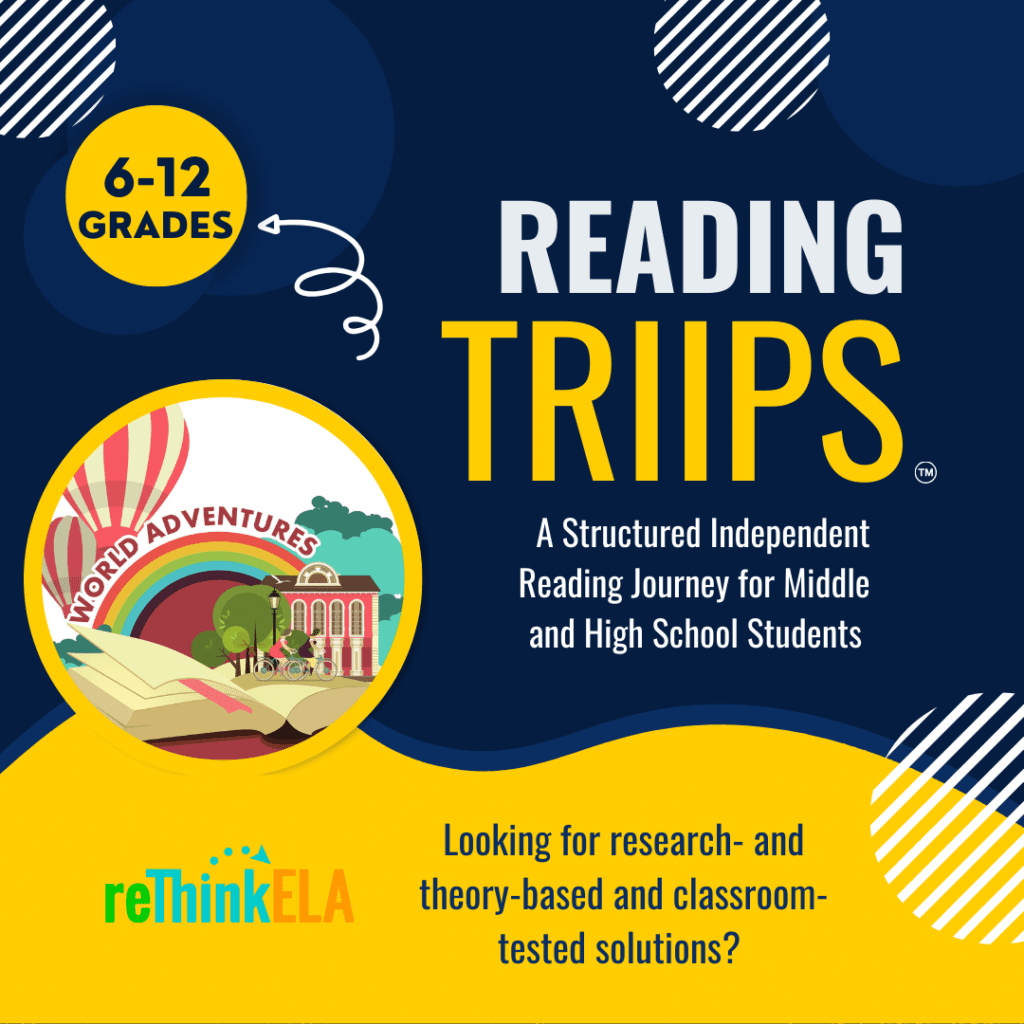
Update: We have created this unit, which you can learn more about at the link below.
Have you struggled to encourage your middle or high school students to read independently -- and show the fruits of their labor without boring, easily faked reading logs? I want to tell you about a structured independent reading journey curriculum unit my team and I are creating and plan to release in early 2023.
The curriculum is based on the past five years of my research, both as a middle school and high school English teacher and as a graduate student in the Instructional Leadership and Academic Curriculum at the University of Oklahoma. I've written about why independent reading is important, shared the National Council of Teachers of English position statement on independent reading, shared various strategies from the Fab Four to the TQE Method for engaging students in independent reading.
But what everything is missing is a way for student to envision reading as something more than just a chore -- that they hate and that's only useful in school if you're interested in getting good grades.
Strategies aren't enough by themselves to encourage students to read more. And reading more is exactly what they need to do in order to discover who they are as readers, which will then encourage them to -- you guessed it -- read even more.
Studies (Allington, Atwell, Gallagher, etc.) show that students who read more are better readers. Students who choose their own reading materials read for pleasure -- and because they also read more, they are better skilled readers.
The question is: How do you motivate students to choose to read and enjoy it? After surveying hundreds of students and reading dozens of studies, I started a project in my classroom designed to use student choices and social drive to help them engage better in reading.
I based my work on information like:
“The research base on student-selected reading is robust and conclusive. Students
read more, understand more, and are more likely to continue reading when they
have the opportunity to choose what they read” (Allington & Gabriel, 2012).
“Self-selected independent reading involves a set of strategies that are learned.
Development of these strategies should be one of the primary goals of a reading/
language arts program. However, the skills of self-selected reading do not
develop by simply offering students the books of a library and asking them to
pick books. … Typically, students who read avidly—especially young students—
have been taught how to select books that interest them” (Hiebert, 2014).
Even though students are less interested in school overall since the pandemic, Barry Gilmore (2011) acknowledges that educators “play an enormous role in developing attitudes toward reading.” Gilmore's work may be older, but it is still true that we've hurt our secondary students by 1) adhering to the canon of Western literature; and 2) failing to spark our students’ interest through choice (Bachmann, 2021).
This structured independent reading activities unit is the perfect way to get your students embarking on reading journeys. With a variety of engaging activities and resources, your students will be so excited to read that they won't want to put the books down.
To learn more about this project, check out the link below.
References
- Allington, R., & Gabriel, R. (2012). Every Child, Every Day. Educational Leadership, 69(6), 10–15.
- Bachmann, A. M. (2021). The Effects of Choice on Student Reading Motivation. [Unpublished doctoral dissertation/master’s thesis]. University of Houston.
- Gilmore, Barry. (2011). “Worthy Texts: Who Decides?” Educational Leadership. 68(6). 46-50.
- Hiebert, F. (2014). “Frank Views on Literacy and the Common Core.” Santa Cruz, CA: The Text Project.
